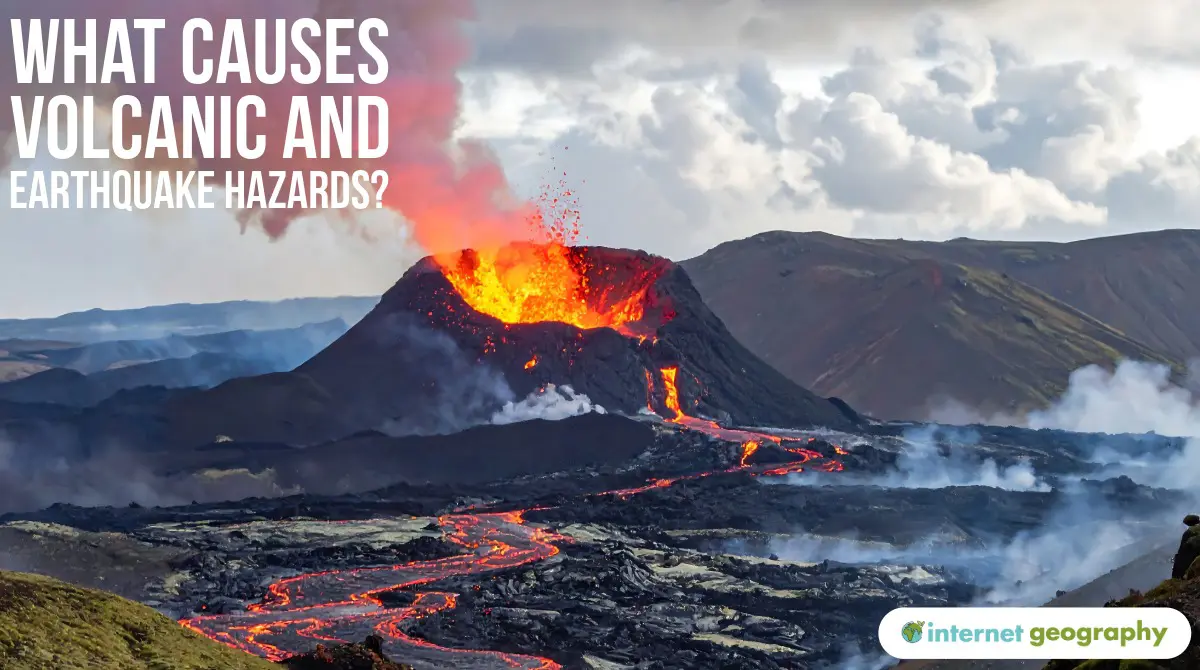What causes volcanic and earthquake hazards?
Edexcel B GCSE Geography > Hazardous Earth > What causes volcanic and earthquake hazards?

Volcanoes and earthquakes don’t all behave in the same way. Some volcanic eruptions produce slow-moving lava, while others blast ash high into the atmosphere. Some earthquakes barely shake the ground; others trigger deadly landslides and tsunamis.
These contrasts are mainly linked to plate boundary type, magma composition, and the depth and strength of earthquakes.
Example: San Andreas Fault, California – where the Pacific and North American plates slide past each other.
Example: Mid-Atlantic Ridge between the Eurasian and North American plates, including Iceland.
This is where the most powerful hazards often occur, especially when oceanic and continental crust meet.
Example: West coast of South America — Nazca Plate subducting under the South American Plate (Peru and Chile).
Example: Himalayas — where the Indo-Australian Plate collides with the Eurasian Plate.
| Plate boundary | Magma type | Lava flow | Explosivity | Volcano style |
|---|---|---|---|---|
| Divergent | Basaltic (runny, low silica) | Fast-flowing lava | Gentle eruptions | Shield volcanoes |
| Convergent (subduction) | Andesitic (thick, gas-rich) | Slow and sticky | Very explosive | Composite volcanoes |
| Conservative | None | None | None | No volcanoes |
Runny basaltic lava means gases can escape easily, so eruptions are usually gentle. Thick, andesitic lava traps gas, so pressure builds and eruptions can be violent.
Strong, shallow quakes are the most dangerous because energy reaches the surface quickly. Subduction zones can “lock” for centuries, then slip suddenly, releasing enormous energy.
| Plate boundary | Earthquake depth | Magnitude | Hazard |
|---|---|---|---|
| Divergent | Shallow | Up to 8+ | Very destructive shaking at the surface |
| Convergent (subduction) | Shallow | Often 5.0-6.0 | Can damage settlements on land |
| Conservative | Shallow to deep | Up to 9.0 | Can trigger tsunamis and landslides |
Different plate boundaries create different hazards: